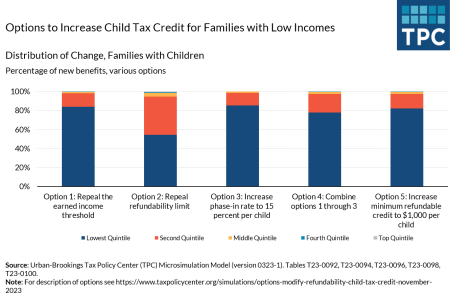Total charitable giving to support the work of nonprofits dropped 10.5% last year, compared to 2021 (when adjusted for inflation), according to a report from Giving USA. Giving by individuals alone fell by 13.4%.
There may be a variety of explanations for the drop, but two of the biggest? The economy and the Tax Cuts and Jobs Act. As the economy has slowed, folks may be feeling less generous. And, under the TCJA, the standard deduction for individuals nearly doubled (it will increase to $14,600 for individuals and married couples filing separately in 2024, representing an increase of $750 from 2023, while the deduction for married couples filing jointly will see a deduction of $29,200, a boost of $1,500 from 2023, and heads of household will see a jump to $21,900 for heads of household, an increase of $1,100 from 2023). With those numbers, fewer taxpayers are itemizing—and you must itemize your deductions on Schedule A to claim a charitable deduction.
So, how can taxpayers maximize their charitable gifts? Matthew Foster, Senior Wealth Advisor for The Colony Group, offers a few tips.
Sprinkle your gifts. You may know how much you want to give each year but find it challenging to write one big check due to cash flow and other commitments. Consider sprinkling your charitable gifts throughout the year. But, Foster warns, be careful. If you rely on automatic debits or scheduled bill-paying, you don’t want to simply set it and forget about it. Revisit those amounts throughout the year to ensure they still reflect your overall goals and adjust as necessary.
Donate appreciated assets. Donating property that has appreciated in value, like stock, can result in a double benefit. Not only can you deduct the property’s fair market value (so long as you’ve owned it for at least one year), but you will also avoid paying capital gains tax. Typically, appreciated assets are subject to capital gains tax at disposition, whether by selling or gifting, but there’s an exception for donations to charitable organizations.
Invest in donor-advised funds. Foster says that a donor-advised fund, or DAF, can be an excellent option for charitable giving. A DAF is an account established at a public charity. Donating to a donor-advised fund makes you generally eligible to take an immediate tax deduction even if the funds aren’t immediately turned over to charity. The funds are typically invested, and you can make grant recommendations to any qualified public charity.
Consider a private foundation. A private foundation is a charitable organization typically established by an individual, family, or corporation to support philanthropic activities. If you have a specific charitable intent, Foster says, a private foundation can allow you to craft a legacy. Importantly, since a board of directors or trustees manages the private foundation, it’s an excellent opportunity for a family with funding and charitable intent to be involved in planning and directing gifts. There’s a payoff—in exchange for the increased control, the amount that’s deductible is a little less, and the administration is a little more than a straight charitable donation.`
Don’t forget about qualified charitable distribution. A qualified charitable distribution (QCD) allows you to roll funds directly from your IRA to a qualified charity. Those amounts can be used to satisfy your required minimum distributions (RMDs) for the year, and the amount donated is excluded from your taxable income—you won’t even have to itemize to do it. The total amount of QCDs that you can exclude from your gross income increased to $105,000 in 2024, up from $100,000 in 2023.
Split-interest entities offer more options. In addition, as part of SECURE 2.0, you can make a one-time election for a QCD to a split-interest entity like a charitable trust. That amount was initially $50,000 but is adjusted for inflation and will be $53,000 in 2024. Foster notes combining a QCD with a split-interest entity can offer multiple benefits. For example, with a charitable remainder trust—or CRT—you can irrevocably fund a trust and designate a non-charitable beneficiary to receive an income stream. Eventually (after a term of years or at death), the remainder passes to charity. The arrangements provides income and estate tax benefits to the donor—plus a predictable source of income.
Invest in estate planning. In addition to trusts, don’t forget about other opportunities to leave a charitable legacy through your estate planning. That can be daunting, but Foster reminds taxpayers that it’s not permanent—in most cases, your estate planning can change. Flexibility can be a real hallmark of charitable giving.
But, Foster warns, donate amounts that make sense. Part of charitable giving is understanding how much you can afford to give, which can be difficult. “You don’t want to over gift,” he says.
How do you get started? You can take some steps yourself—making cash gifts, for example. But if you’re considering more significant gifting, including long-term projects like trusts, pledges or charitable foundation, Foster suggests contacting a financial advisor. A financial advisor can help you identify and work toward your charitable goals, including crafting strategies with gift and legacy officers at charities. Specifically, they can help with communications—and help set expectations. They can also help facilitate conversations with families about intent and possibly bringing in a younger generation to continue giving.
Read the full article here








